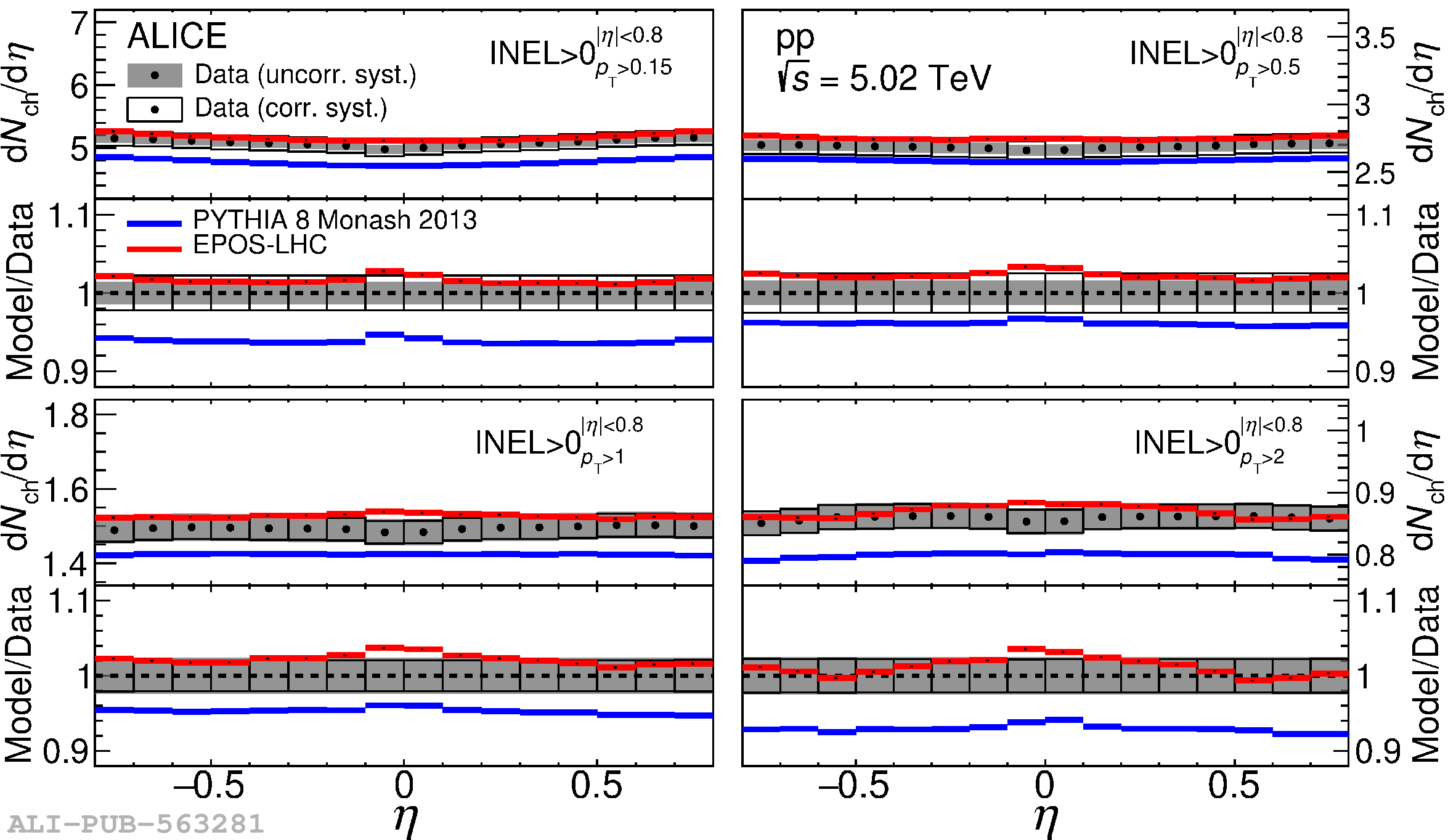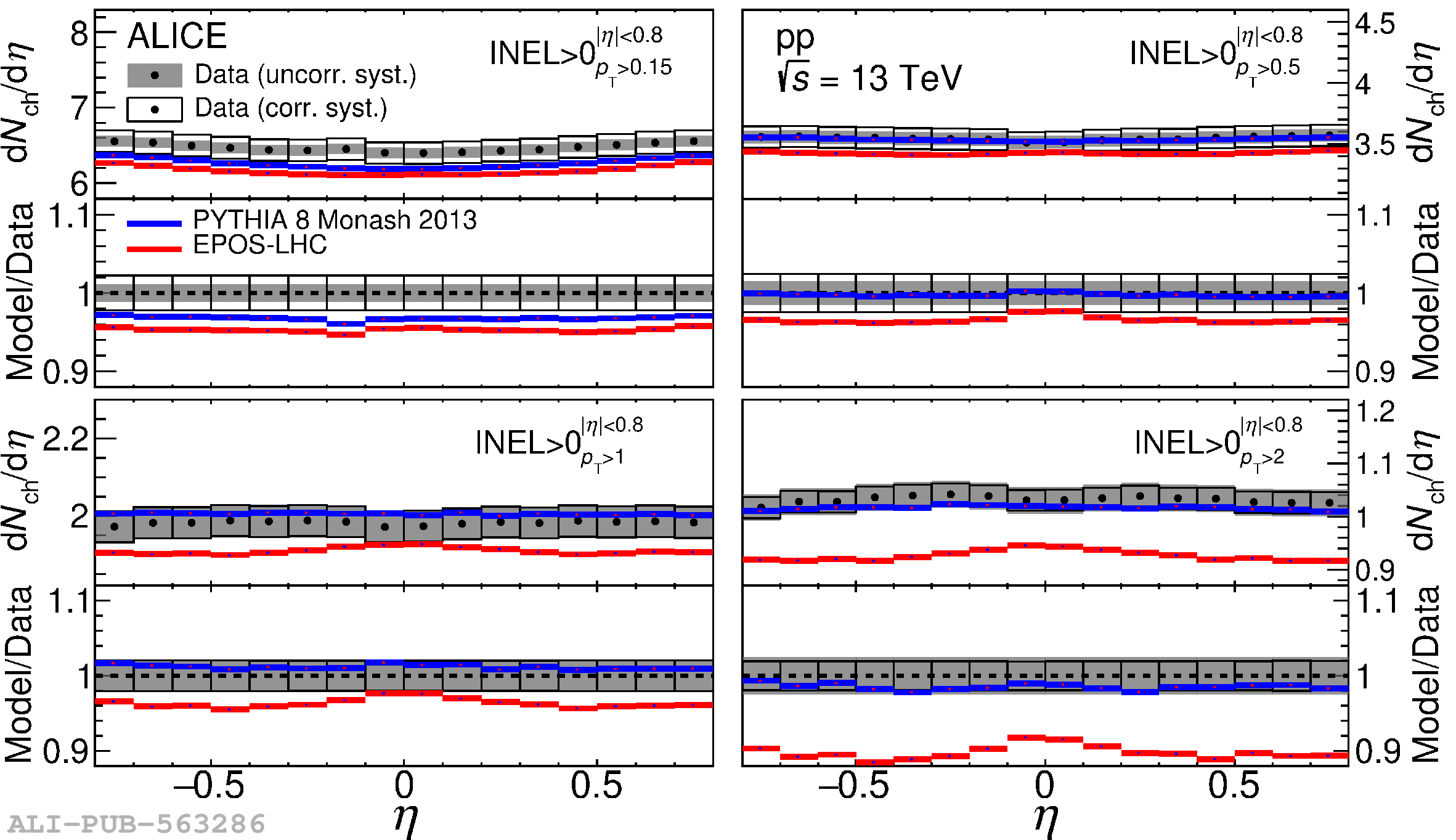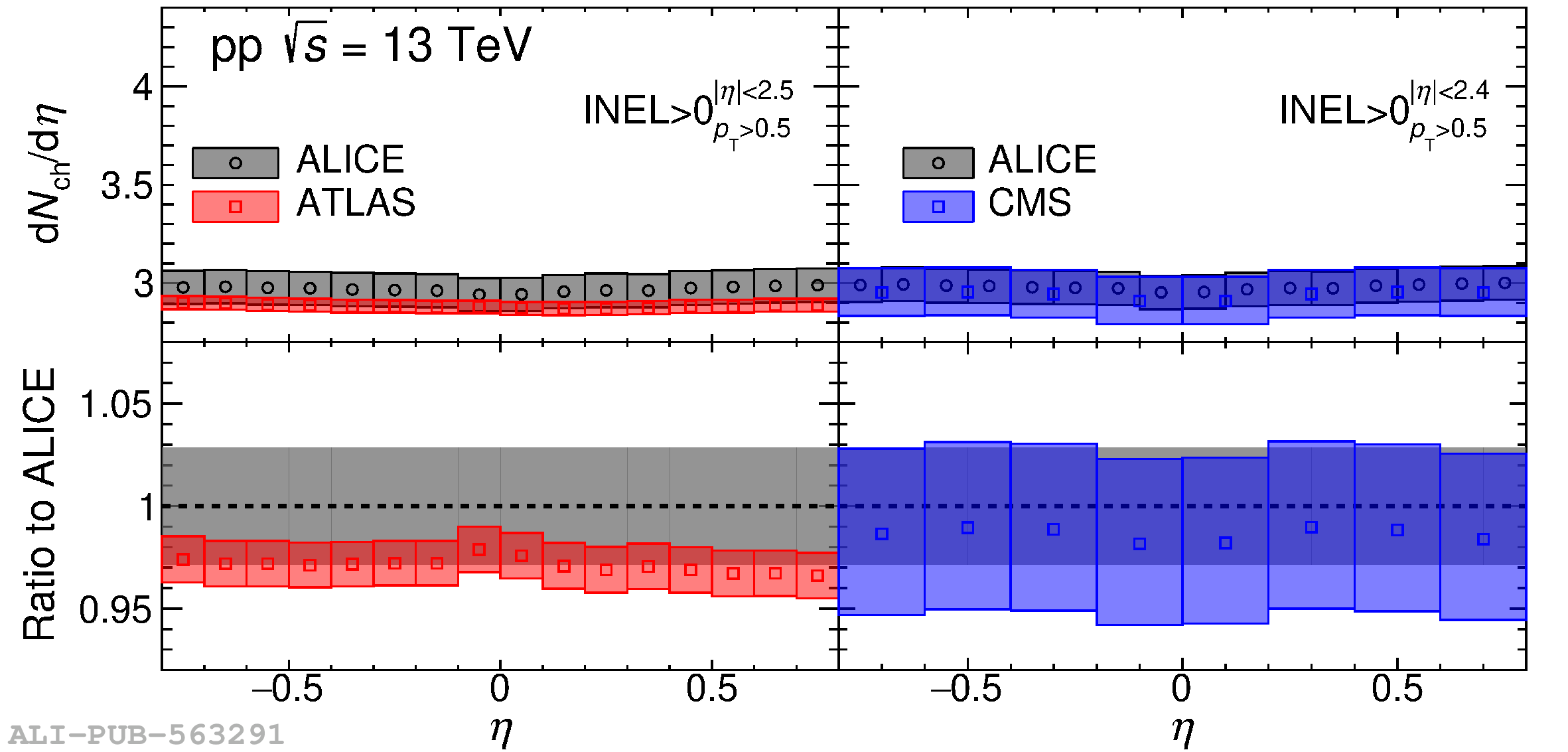The pseudorapidity density of charged particles with minimum transverse momentum ($p_{\rm T}$) thresholds of 0.15, 0.5, 1, and 2 GeV$/c$ is measured in pp collisions at the centre of mass energies of $\sqrt{s} =$ 5.02 and 13 TeV with the ALICE detector. The study is carried out for inelastic collisions with at least one primary charged particle having a pseudorapidity ($\eta$) within $\pm0.8$ and $p_{\rm T}$ larger than the corresponding threshold. In addition, measurements without $p_{\rm T}$-thresholds are performed for inelastic and non-single-diffractive events as well as for inelastic events with at least one charged particle having $|\eta|<~1$ in pp collisions at $\sqrt{s} =$ 5.02 TeV for the first time at the LHC. These measurements are compared to the PYTHIA 6, PYTHIA 8, and EPOS-LHC models. In general, the models describe the $\eta$ dependence of particle production well. However, discrepancies are observed for the highest transverse momentum threshold ($p_{\rm T}>2 {\rm\ GeV}/c$), highlighting the importance of such measurements for tuning event generators. The new measurements agree within uncertainties with results from the ATLAS and CMS experiments obtained at $\sqrt{s} = 13$ TeV.
Phys. Rev. D 108 (2023) 072008
HEP Data
e-Print: arXiv:2211.15364 | PDF | inSPIRE
CERN-EP-2022-262
Figure group





